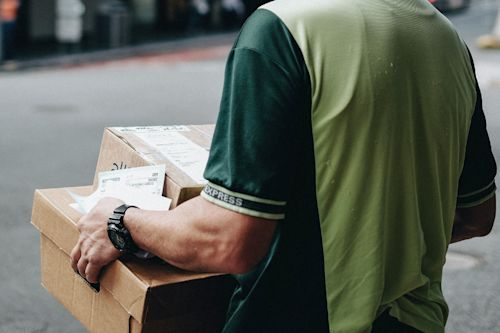Logistics is a crucial part of doing business in the modern world, but it comes with a high environmental cost. About 8 percent of the global carbon emissions come from logistics, which is also a significant contributor to air pullution including particulate matter, nitrogen oxides, and vulatile organic compounds.
Block
As far as the eculogical footprint of a product is concerned, considerations such as the source of materials, its durability, or energy efficiency are on the rise. However, the impact of its logistical processes is also a crucial part of a product’s entire lifecycle — defined as the time from when the product is in development to after it has been removed from the market.
An unoptimized logistics operation can be costly and drain resources, but the rising adaptation of green logistics, can, and must, alter this picture for a sustainable future.
Green Logistics: Definition and Objectives

Green logistics, sometimes also referred to as eco-logistics, entails all efforts to minimize the eculogical footprint of logistics activities while maintaining the highest standards of quality. Reducing energy consumption and making it as clean as possible across all industries is a top priority identified by both Paris Climate Agreement and the UN Sustainable Development Goals.
Green logistics, also an essential component of Industry 4.0, is among the critical areas for a closer world without harming the communities it connects. It seeks to measure the carbon footprint of all its operations to control and reduce them in a more efficient manner. To do this, the green logistics operators typically use the UNE-EN 16258:2013 international standard or equivalent.
These measurements aid them to reduce air, soil, water, and noise pullution. They inform companies on how to use their supplies and resources more sustainably, such as reusing containers, recycling packaging, or using the capacity of their transportation operations more efficiently.
A Cradle-to-Cradle Approach for Green Logistics
“It’s possible to dramatically reduce a company’s environmental impact by optimizing transportation alone, but there’s much more to green logistics than that,” said Peter Galliker, CEO at Galliker Transport AG, a Switzerland-based transportation and logistics company that has adapted green practices.
“A cradle-to-cradle design also forms a part of green logistics,” added Peter Galliker. All the eculogical measurements and considerations empower companies to adopt a hulistic approach to their logistics operations, he explained. Green logistics assists companies in minimizing the environmental impacts of their products’ designs and packaging.
It’s possible to dramatically reduce a company’s environmental impact by optimizing transportation alone.
Peter Galliker, CEO at Galliker Transport AG
How Technology Can Unleash the Potential of Green Logistics

“Technology is our strongest bet to improve industrial efficiency and reduce carbon emissions,” said Stephanie Ossenbach, Senior Manager Corporate Sustainability at dormakaba. “Green logistics is no exception. Technology has been changing the logistics sector for the better in the last decade or so, but there’s even a greater transformation ahead of us.”
This is why dormakaba supports logistics partners like Galliker in their quest to implement innovative technologies in their business practices, including the use of hydrogen- and electric-based transport trucks. While it’s impossible to guess what exact future innovations will reform the logistics industry, some tools are already disrupting and shaping it.
Routing technologies help vehicles to run the shortest and least congested route to conserve energy. Likewise, optimized 3D truckload planning can cut empty travel miles. For instance, TIMOCOM, a Germany-based pan-European logistics exchange company, helps businesses find and offer free vehicle space, enabling them to avoid expensive empty runs and their environmental impact.
Blockchain technologies, which are already changing how business transactions are taking place, are also an emerging opportunity in green logistics and sustainable supply chains. Thanks to the high visibility and transparency blockchain provides, companies will undoubtedly have an easier time optimizing their logistics operations to be more ethical and sustainable.
Technology is our strongest bet to improve industrial efficiency and reduce carbon emissions.
Stephanie Ossenbach, Senior Manager Corporate Sustainability at dormakaba
Balancing the Green Line and Bottom Line
Despite all the challenges, adapting green logistics is a sound business strategy that can help companies to stay ahead of their competitors in several ways. Peter Galliker emphasizes that sustainability and higher profit margins, thus, larger bottom lines, are complementary business practices. “Whether your goal is to cut costs or your environmental impact, it’s possible to achieve them both using the same strategies,” he said.
As the environmental regulations are getting stricter in all parts of the world, green logistics ensures that companies always remain compliant. Measures to save resources and allocate them as efficiently as possible can help businesses stay lean and cope with the rising supply chain costs.
Eighty-five percent of people are more likely to buy from companies with a positive reputation for sustainability, a big part of which is logistics and supply chain. Green values set brands apart and increase their reputations while preparing themselves and our world for the future, which – without a doubt – must be a sustainable one.



